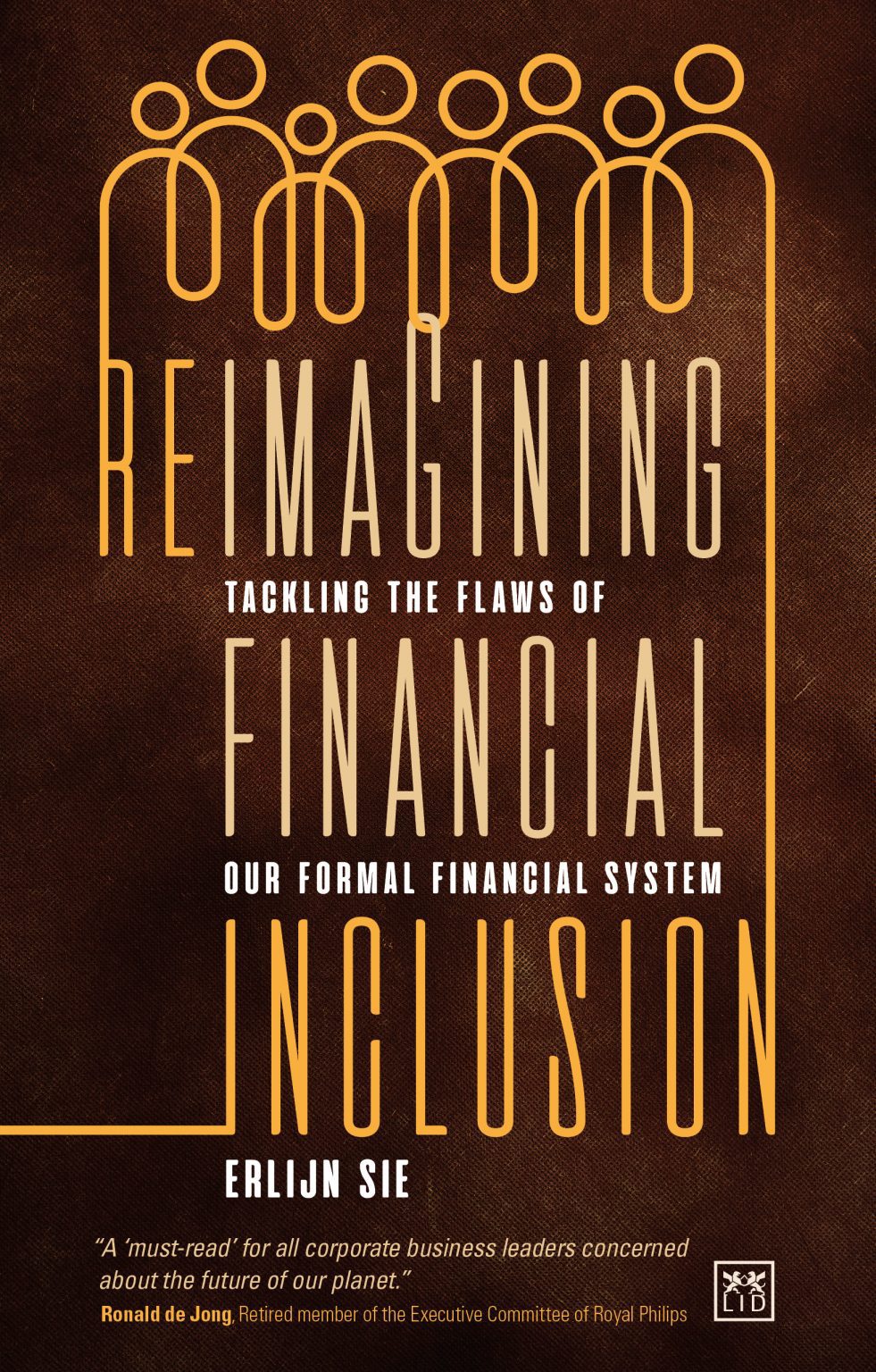|
A treat on our joint journey: micro-pension schemes for non-salaried workers
By Guest Contributor Erlijn Sie
Author of Reimagining Financial Inclusion, Erlijn Sie, presents a financial inclusion game-changer who managed to provide pension schemes for low-income workers in order to end old-age poverty.
Travelling together is tiring, especially when it’s a long journey, and with many partners. Similarly, with Financial Inclusion, while working towards it – with everyone bringing in their own contribution – it can feel like nothing is happening for a long time. Whether you’re a funder, providing financial support, a big business joining to learn and share expertise and perhaps some company resources, or a social innovator, this multi-stakeholder travel is demanding, takes a long time, and doesn’t deliver direct results than can be shared on Instagram.
How then, do you know you’re on track? How do you know you are changing the system, getting those people who have been financially excluded for so long included in our financial system. Does your contribution still make sense, are you heading in the right direction, does your contribution make a difference? It helps to compare your trip to the ones who’ve gone a similar route. To do so, you need to relax, lean back and reflect.
Let’s look at a trip that took over two decades – over a rocky road. The big hairy audacious issue is: how to end old-age poverty? For the billions of non-salaried workers across the world, in informal jobs. The dot on the horizon, the envisioned outcome: micro-pension schemes available for all of them. How? Through a platform of supporting groups of partners, to design and implement digital micro-pension systems for their communities. The micro-pension system is enabling and encouraging the low-income workers to save for a secure and dignified retirement. The groups of partners that come together and implement it, are governmental, private sector (employers), international and national financial institutions, and regularly a funder or two. Roughly this trip had four legs.
PHASE 1: Hop on hop off bus
It started with an idea, and an amazing social innovator – the Indian game changer Gautam – who was keen to solve this issue of old-age poverty. They set out on a journey, and piloted and tested many versions of pension solutions in India, with many partners, in many different states, in different shapes and forms. It led to a deep understanding of the needs of the people. Answering many questions such as why current system players were not able to serve the needs of the poor people, what was blocking them. The findings outlined the grasping obsolete or wrong assumptions of the current system, underpinning how dis-functioning it is.
If we see Gautam, the game changer, as the bus driver, they manoeuvred the bus, and different partners hopped on and off, figuring out what India needed – a contribution-based pension system. Each of the partners joined the trip in order to gain invaluable insights, deliver key results and have an impact on the lives of people in some of the most unprivileged parts of the India.
PHASE 2: Building a train track and running the train
In the second phase, financial literacy education on pension and savings were developed. Micro-pension schemes were tested. Gautam continuously collaborated with different partners, creating the policy and institutional architecture, to make financial security in old age a reality for the Indian poor, while co-creating a national micro-pension scheme. Some partners joined mainly to create awareness and stimulate self-help while changing savings behaviour. Other partners joined to design the National Pension Scheme introducing flexible financial services taking irregular incomes of the informal sector into consideration. Others joined institutional capacity building to increase outreach and make products affordable. Gautam partnered with payment service providers, banks and card companies, but also with software companies to develop the digital infrastructure as well. This was no longer hopping on and off the bus trip, a train trajectory was built, and the partners were committed for the long run to progress towards the desired outcome. Over 50 partners were involved and a whole eco-system was created at this part of the journey, as a result. And, Gautam was no longer driving alone, the others joined in this shared vision in India.
It wasn’t an easy ride – with many hurdles to overcome and with numerous people and partners to convince. Pilots and early evidence creation was important to achieve that; like the “Indian Retirement, Income and Savings Survey”, produced in partnership again, for the Indian Ministry of Finance. This was instrumental for advocacy efforts. With several state governments committing to supplement the savings, private companies joining to contribute to the savings, and nearly 50 million low-income workers enrolled, a new horizon started to come around the corner.
PHASE 3: Teaching and offering building blocks to build train tracks elsewhere
The third phase started by envisioning similar micro-pension schemes for the informal sector workers in other countries too. A different ball-game. Now it is all about enabling other groups of stakeholders, country by country, to do the same in their countries. This part of the journey focuses on how to build eco-systems of partners; empower them to implement secure mechanisms that harness existing institutional capacity to reach low-income workers and deliver quality and affordable micro-pension schemes.
Instrumental to this phase is the pinBox Solutions platform – a platform enabling a wide network of partners to commit to digital micro-pension inclusion in Asia, Africa and Latin-American countries. It offers ready to deploy, white labelled micro-pension administration and delivery tech solutions, as well as retirement literacy, advisory services for market scoping, and a ton of research and policy papers for lobby and advocacy. Gautam, its co-founder, Parul, and his team are great leaders to steer the wider network to the envisioned outcome. They are by no means the only ones leading. Leadership is distributed, many others have joined, are committing resources and taking accountability. The platform plays a powerful role to encourage cooperative and collaborative multi-stakeholder action on micro-pension inclusion. It holds the space of a connected eco-system, offering the building blocks and expertise on how to build these train tracks and run the schemes, adapted to local contexts.
PHASE 4: After the point of no return (often called: the tipping point)
Until now, ‘the industry’ was assuming, or more explicitly: the loudest argument has been that it is impossible to offer a pension to poor people. The fourth phase starts when a key community of (early) believers is convinced that this is no longer true. This phase is an awkward one, it’s one in which there is no denying that we need train tracks, or in this case, micro-pension schemes to end old-age poverty. And the ambition and actions to change the financial system, are carried forward by so many actors in so many countries, that this change has become irreversible. Still, a lot of convincing and hard work needs to happen most of the time and that’s usually the most resource-intense phase.
Hence your contribution, your team’s and your business’ support is still very much needed in this phase of the journey. To jointly transform the financial system to include all of us. However, the pathways to get there are partly paved already.
Did you get a taste of the sweetness of the promise this example holds? Reflect on your own contribution and journey. I hope you’ve enjoyed the vistas of this birds-eye view of how a long-distance and group journey of system change looks like, in particular in the space of Financial Inclusion.
You can read about many more game changers, in different phases of their journey with various partners along the way in my book ‘Reimagining Financial Inclusion’.
This article is part of a series, read the previous ones here:
How to Begin Reimagining Financial Inclusion
ABOUT THE AUTHOR

ERLIJN SIE has 15 years of experience working with multi- nationals and an equivalent number of years leading and growing social ventures. She is the co-founder of Micro- credits for Mothers and Credits for Communities and was managing director of the Banking with the Poor Net- work and HandsOn Microfinance. Currently, she works at Ashoka – the world’s largest international network of social entrepreneurs – with blue chip companies to trans- form business into a force for good through collaboration with social innovators. Erlijn has devoted her career to contributing to a more just and inclusive economy. Erlijn holds two Masters degrees in Management Sciences and Asian Studies.
LinkedIn: https://www.linkedin.com/in/erlijn-sie-989491/
Suggested Reading

To live in today’s world, you need money; yet the majority of people do not have access to it. This book features 13 game changers from around the world who are challenging the status-quo and paving new pathways to financially include low-income families. Through an in-depth study of their thought-provoking strategies, a framework for inclusion is distilled, centring around five levers to tackle the flaws of our formal financial system. If you are curious about how to get involved with changing the future of finance, this book is for you.
